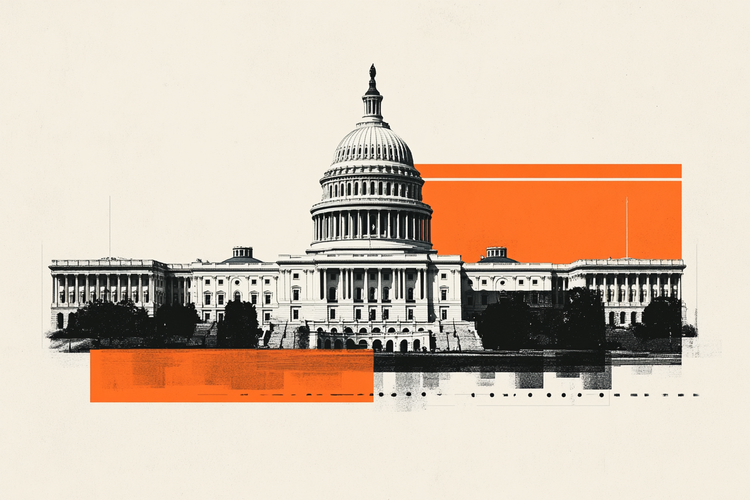- The DXY Dollar Index continues its recovery for the third consecutive day.
- Traders note that ADP continues to hold above 100,000 despite missing estimates.
- The Dollar Index could close above 104.00, on track to return to October levels.
He US dollar (USD) is entering a third consecutive day of gains as measured by the Dollar Index (DXY). Although US yields are retreating, the rate differential with other countries and their currencies is widening because markets are starting to price in faster and bigger cuts in other countries than those planned for the US Federal Reserve. On Wednesday, traders will closely monitor the Euro/US Dollar (EUR/USD) cross, as breaking the crucial 1.0770 level could open a gap for the pair to approach 1.0600 in the near term.
On the economic front, traders have just learned the monthly figures from ADP, which did not exceed estimates. The figure of 103,000 was well below the 130,000 expected and the previous 113,000. Despite the low figure, the Dollar remains stable in the subsequent reaction, with traders seeing support in the fact that the ADP remains above 100,000.
Daily summary: ADP disappoints estimates
- At 12:00 GMT, the Mortgage Bankers Association published its weekly mortgage application index. Previously it stood at 0.3%, and now it stands at 2.8%.
- At 13:15 GMT the ADP employment figures for November were released, which fell to 103,000, from 113,000 previously.
- Stocks are trying to overcome the negative results of December. All indices rise worldwide, with Asian stocks rising more than 1%.
- CME Group’s FedWatch tool shows that markets are pricing in a 99.7% chance that the Federal Reserve will keep interest rates unchanged at its meeting next week.
- The 10-year US Treasury yield falls to 4.17%. In Europe, yields are falling even faster.
Dollar Index Technical Analysis: It’s Not Back Yet
The dollar is trading around 104.00 and looks set to post its third consecutive day of gains. Although yields are falling in the US, in Europe and other countries they are falling even faster, meaning that the US Dollar inherently has a higher value in terms of yield than most of its peers. This rate differential, which persists even in a falling rate environment, could send the US Dollar Index (DXY) back to levels close to 105.00-106.00.
The DXY broke the high on Monday and closed near 103.54 on Tuesday. The DXY could still rise further, if the jobs data triggers a further rise in US yields. A two-tier pattern, with a daily close lower followed by an open higher, would put the DXY back up above 104.28, with the 55-day and 100-day SMA becoming support levels.
On the downside, the 200-day SMA should act as support and not allow the DXY to fall below 103.57. If it fails, the June lows make sense to look for some support near 101.92. Should further developments occur to initiate further rate declines in the US, expect a near full recovery from the summer 2023 rally, heading towards 100.82, followed by 100.00 and 99.41.
US Dollar FAQ
What is the US Dollar?
The United States Dollar (USD) is the official currency of the United States of America, and the “de facto” currency of a significant number of other countries where it is in circulation alongside local banknotes. According to 2022 data, it is the most traded currency in the world, with more than 88% of all global currency exchange operations, equivalent to an average of $6.6 trillion in daily transactions.
After World War II, the USD took over from the pound sterling as the world’s reserve currency.
How do the decisions of the Federal Reserve affect the Dollar?
The single most important factor influencing the value of the US Dollar is monetary policy, which is determined by the Federal Reserve (Fed). The Fed has two mandates: achieve price stability (control inflation) and promote full employment. Your main tool to achieve these two objectives is to adjust interest rates.
When prices rise too quickly and inflation exceeds the 2% target set by the Fed, the Fed raises rates, which favors the price of the dollar. When Inflation falls below 2% or the unemployment rate is too high, the Fed can lower interest rates, which weighs on the Dollar.
What is Quantitative Easing and how does it influence the Dollar?
In extreme situations, the Federal Reserve can also print more dollars and enact quantitative easing (QE). QE is the process by which the Fed substantially increases the flow of credit into a clogged financial system. This is an unconventional policy measure used when credit has dried up because banks do not lend to each other (for fear of counterparty default). It is a last resort when a simple lowering of interest rates is unlikely to achieve the necessary result. It was the Fed’s weapon of choice to combat the credit crunch that occurred during the Great Financial Crisis of 2008. It involves the Fed printing more dollars and using them to buy US government bonds, primarily from financial institutions. QE usually leads to a weakening of the US Dollar.
What is quantitative tightening and how does it influence the US dollar?
Quantitative tightening (QT) is the reverse process by which the Federal Reserve stops purchasing bonds from financial institutions and does not reinvest the principal of maturing portfolio securities in new purchases. It is usually positive for the US dollar.
Source: Fx Street
I am Joshua Winder, a senior-level journalist and editor at World Stock Market. I specialize in covering news related to the stock market and economic trends. With more than 8 years of experience in this field, I have become an expert in financial reporting.







